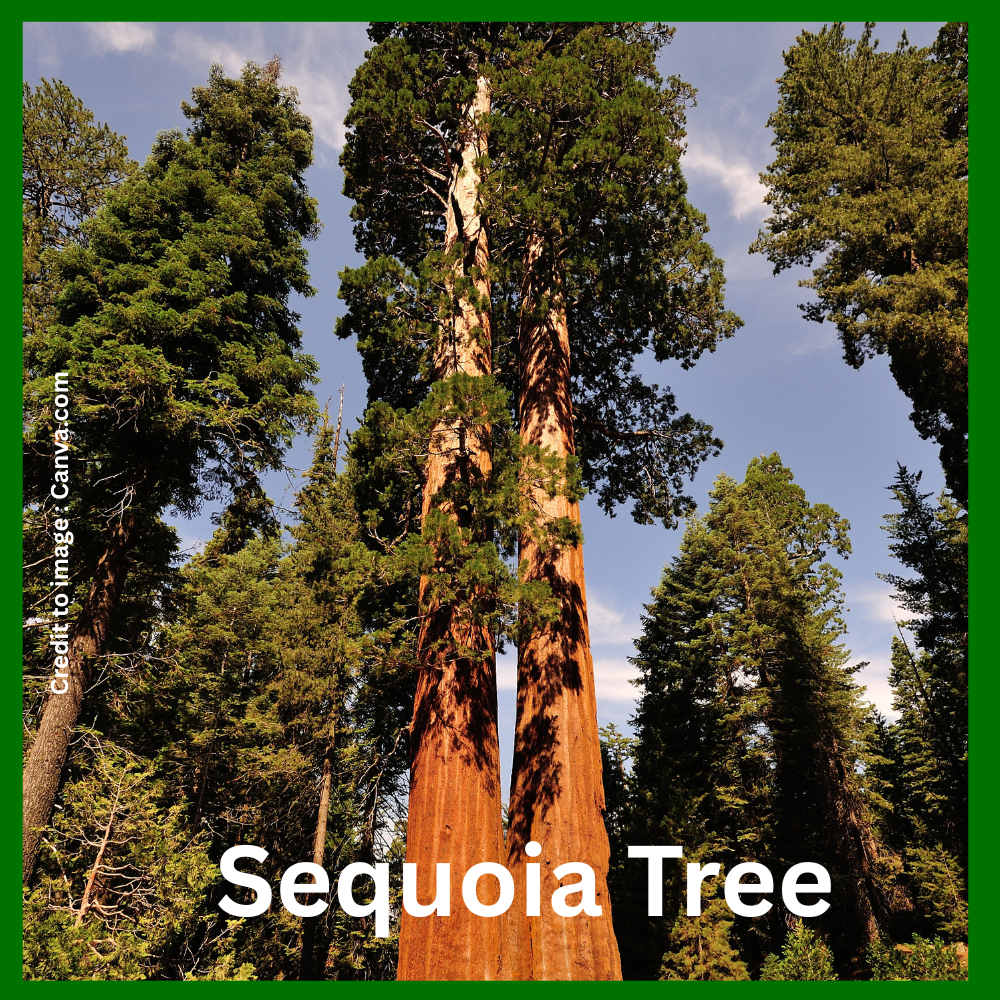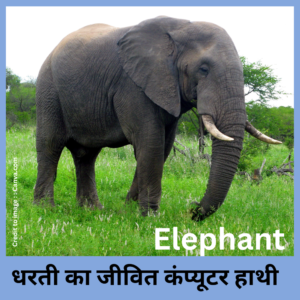The Sequoia tree, one of Earth’s largest living organisms, captivates nature lovers and scientists alike. This article explores everything about the majestic Sequoia—from its size and age to where it grows and how it’s protected.
What Is a Sequoia Tree?
The Sequoia tree—also known as the giant sequoia (Sequoiadendron giganteum)—is a massive, long-living coniferous tree found primarily in California’s Sierra Nevada mountains. These trees are famed for their incredible size, thick reddish bark, and resistance to pests, fire, and disease.
Where Do Sequoia Trees Naturally Grow?
Giant Sequoia trees thrive naturally along the western slopes of California’s Sierra Nevada Mountains. These towering giants are most famously found in Sequoia National Park, Yosemite National Park, and Kings Canyon National Park, where they dominate ancient groves and leave visitors in awe of their sheer presence.
How Big and Old Can a Sequoia Tree Get?
Sequoias are true giants of the natural world. They can soar to heights exceeding 300 feet (91 meters) and live for an astonishing 3,000 years or more. Among the most iconic is the General Sherman Tree, which stands proudly at about 275 feet tall and is believed to be between 2,200 and 2,700 years old, making it one of the largest living trees on Earth by volume.
Why Are Sequoia Trees So Huge and Long-Lived?
Their immense size and lifespan are due to several factors:
Resin-rich bark protects them from insects and fires.
Thick bark (up to 3 feet thick) resists heat and decay.
High elevation habitats reduce competition and disease.
Deep root systems allow them to absorb nutrients over centuries.
How Are Sequoia Trees Different from Redwood Trees?
Many people confuse Sequoia trees with coastal redwoods:
Giant Sequoias grow further inland and are known for their massive girth and heavyweight stature.
Coastal Redwoods (Sequoia sempervirens) grow near the Pacific Coast and are taller but thinner.
What are the Important Facts about the Sequoia Tree ?
Scientific Data Table: Sequoia Tree (Sequoiadendron giganteum)
| Scientific Attribute | Data/Description |
| Scientific Name | Sequoiadendron giganteum |
| Family | Cupressaceae |
| Genus | Sequoiadendron |
| Common Names | Giant Sequoia, Sierra Redwood, Wellingtonia |
| Plant Type | Coniferous Evergreen Tree |
| Native Range | Giant Sequoias are naturally found along the western slopes of California’s Sierra Nevada Mountains |
| Altitude Range | Thriving at elevations between 4,000 and 8,000 feet (approximately 1,200 to 2,400 meters). |
| Average Mature Height | 164 to 279 feet (50 to 85 meters) |
| Maximum Recorded Height | 311 feet (94.8 meters) |
| Trunk Diameter (at breast height) | At chest height, the trunk of a mature Giant Sequoia can span between 20 and 40 feet wide (6 to 12 meters), making it one of the thickest tree trunks on Earth. |
| Bark Thickness | Up to 3 feet (0.9 meters) |
| Wood Density | Approximately 24 lb/ft³ (0.38 g/cm³) |
| Root System | Shallow, wide-spreading lateral roots, no taproot |
| Growth Rate (Juvenile) | 1.5 to 2.5 feet per year under ideal conditions |
| Photosynthetic Pathway | C3 |
| Lifespan | Giant Sequoias often live for an impressive 2,000 to 3,200 years. |
| Reproductive Method | They reproduce as monoecious trees, meaning both male and female cones grow on the same tree, allowing them to self-pollinate within a single giant. |
| Cone Size | The cones of a Giant Sequoia typically measure between 4 to 7 centimeters in length and 2.5 to 3.5 centimeters in width. |
| Seed Dispersal Mechanism | Their seeds are released through a fascinating process—either carried by the wind or triggered by the heat of forest fires, which causes the cones to open. |
| Fire Adaptation | Extremely fire-resistant due to thick bark and high canopy |
| Drought Tolerance | Moderate; prefers moist, well-drained soils |
| Soil Preference | Sandy loam, slightly acidic to neutral (pH 5.5–7.5) |
| Carbon Sequestration Capacity | Can sequester several thousand kg of CO₂ in mature lifetime |
| Conservation Status (IUCN) | Endangered (due to wildfires, droughts, and climate change) |
Largest Known Sequoia Trees (by Volume)-
| Tree Name | Estimated Volume (cubic feet) | Location | Height (ft) | Age Estimate (Years) |
| The iconic General Sherman Tree | A staggering volume of around 52,500 cubic feet | located in Sequoia National Park | Stands at an impressive 275 feet tall. | Approximately between 2,200 and 3200 years old. |
| General Grant | 46,600 | Kings Canyon National Park | 267 | ~1,600–1,800 |
| President Tree | 45,000 | Sequoia National Park | 247 | ~3,200 |
| Lincoln Tree | 44,400 | Sequoia National Park | 255 | ~2,000+ |
Environmental Impact of Sequoia Trees-
| Environmental Benefit | Description |
| Carbon Sequestration | A mature sequoia can store thousands of kg of CO₂ over its lifetime |
| Fire Resistance | Bark resists high temperatures, helping forest ecosystems to regenerate |
| Soil Health | Thick roots stabilize mountain soil and reduce erosion |
| Biodiversity Support | Provide shelter for birds, insects, and other wildlife species |
| Water Cycle Regulation | Help maintain local moisture levels in mountainous regions |
Comparison – Sequoia vs. Redwood Tree-
| Feature | Giant Sequoia (Sequoiadendron giganteum) | Coast Redwood (Sequoia sempervirens) |
| Location | Sierra Nevada, California | Pacific Coast, Northern California |
| Maximum Height | ~311 feet (95 m) | ~379 feet (115 m) |
| Maximum Diameter | Up to 40 feet (12 m) | Up to 20 feet (6 m) |
| Bark Thickness | Up to 3 feet | Around 1 foot |
| Longevity | 2,200–3,200+ years | 500–2,000 years |
| Climate Preference | Giant Sequoias thrive in mountainous regions with dry, warm summers. | Coastal Redwoods prefer the cool, moist environment of foggy and humid coastal areas. |
Are Sequoia Trees Endangered?
Yes, the Giant Sequoia is classified as Endangered due to:
Climate change
Wildfires intensified by drought
Limited native range
Conservation efforts are underway to preserve existing groves and manage forest health through prescribed burns and protection from logging.
Can I Plant a Sequoia Tree in My Backyard?
Technically, yes. Sequoia saplings are available from nurseries. However, they require:
Lots of space (they can outgrow most yards)
Well-drained soil
Cool, moist climates
So, unless you live in a similar environment to the Sierra Nevada, growth might be limited.
What Are the Benefits of Sequoia Trees?
Apart from their awe-inspiring beauty, sequoias provide:
Massive carbon sequestration (great for climate mitigation)
Habitat for birds and insects
Soil stabilization
Tourism and educational value
Why Are Sequoia Trees Important for the Environment?
Sequoias are ecological powerhouses. A single tree can store tons of carbon, helping to offset greenhouse gas emissions. Their presence supports biodiversity, water retention in forests, and natural fire cycles.
How Are Sequoia Trees Being Protected?
Some major conservation efforts include:
National Parks & Reserves protecting groves
Prescribed fire management
Tree health monitoring and research
Legislation banning logging in protected zones
Summary
The Sequoia tree stands as a towering symbol of nature’s power and longevity. From its ancient roots in California’s Sierra Nevada to its role in modern conservation efforts, the sequoia continues to inspire awe. Whether you’re a traveler, a botanist, or just a curious soul, understanding the sequoia’s story helps us appreciate the natural world and the urgent need to protect it.
FAQs About Sequoia Trees
Absolutely! Here’s a unique and human-toned version:
Q1: What is the age of the oldest recorded Sequoia tree?
A: The most ancient known Sequoia is believed to be more than 3,200 years old, standing as a living witness to millennia of Earth’s history.
Q2: Can sequoia trees survive fire?
A: Yes. Their thick, fire-resistant bark helps them survive wildfires that might kill other trees.
Q3: Are sequoias the tallest trees on Earth?
A: No. Certainly! Here’s a unique rewrite: While coastal redwoods hold the record for height, giant sequoias take the crown for being the largest trees on Earth by total volume.
Q4: How fast do sequoia trees grow?
A: Young sequoias grow rapidly, around 1–2 feet per year, under the right conditions.
Q5: Can I visit sequoia trees in California?
A: Yes! Visit Sequoia National Park, Yosemite, or Calaveras Big Trees State Park to witness them in person.
References
- National Park Service – www.nps.gov/seki
- Save the Redwoods League – www.savetheredwoods.org
- California Department of Forestry and Fire Protection (Cal Fire)
- Smithsonian Magazine – “The Science Behind the Giant Sequoia”
- American Forests – Champion Trees Database
PRAKRITI DARSHAN-NATURE AND ENVIRONMENT MAGAZINE
Prakriti Darshan is a leading Hindi-language magazine and digital platform dedicated to raising public awareness on vital issues related to nature, biodiversity, climate change, sustainable development, and environmental conservation. This magazine represents a unique blend of science, society, and sensitivity—offering a common platform for researchers, students, NGOs, policymakers, nature lovers, and conscious citizens alike.
With thought-provoking articles, inspiring stories, environmental research, impactful projects, and policy perspectives, Prakriti Darshan is a transformative journey toward a greener and more sustainable future.
Let us come together to protect and preserve our planet for generations to come. 🌿🌍
Join us in our mission to protect and celebrate the planet. 🌏💚
Click for more information
- Visit www.prakritidarshan.com for Free Magazine ,Free membership benefits ,offered price magazine @ Rs.1 or Rs.11 only and more ……
- 🎗️Sponsor Prakriti Darshan Magazine – Support our environment mission.
- 📚 Explore the Environment Magazine – Read our latest and past issues.
- ✍️ Read Editor’s Article or Blog – Insightful thoughts from our editorial desk.
- 🌱 Join Membership – Be part of India’s leading green community.
- 🤝 Become an NGO Impact Story Partner – Share your grassroots impact nationwide.
- 🏢 Become a Company Partner – Showcase your CSR, ESG, or sustainability work.
- 👤 Become an Individual Partner – Volunteer, write, and raise your green voice.
- 📢 Advertise with Us – Reach eco-conscious readers across India.
- Eco Trails Newsletter
- Donate for “Hari Ho Vashundhara & Har school Hariyali “ Plantation campaign Associated Partner NGO :GDSS NGO www.gdssngo.org
BALA DATT SHARMA,
MANAGING EDITOR ,
PRAKRITI DARSHAN-NATURE AND ENVIRONMENT MAGAZINE
- Yamuna River- Lifeline of North India :A Scientific, Agricultural, and Environmental Perspective - July 14, 2025
- Jurassic World Rebirth Breaks Box Office Records : Global Box Office Revenue $1.5 Billion (And rising) Globally with a Roaring Environmental Message - July 14, 2025
- African Elephant: Facts, Types, Scientific Data, and Why Their Survival Matters for Our Planet - July 13, 2025







